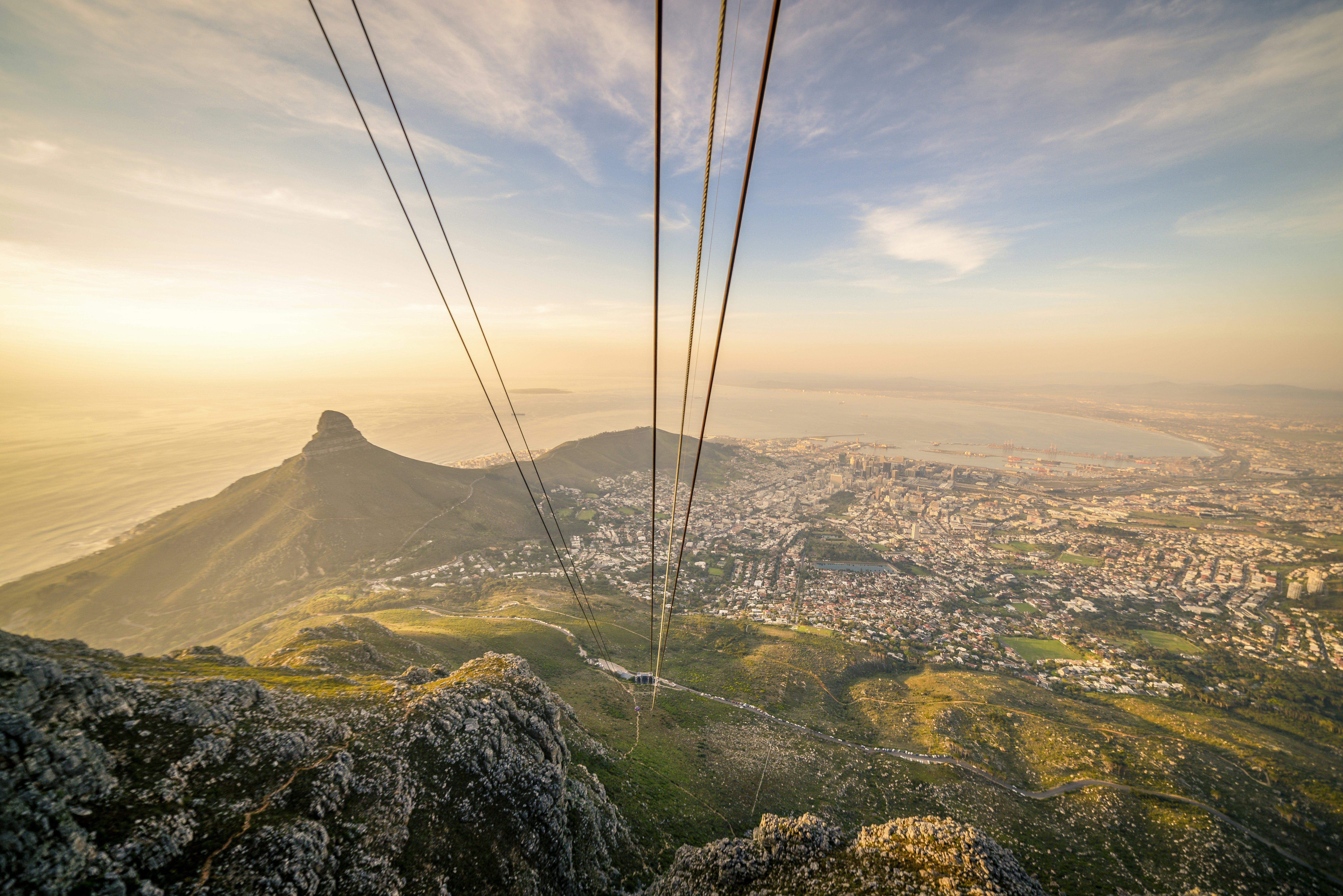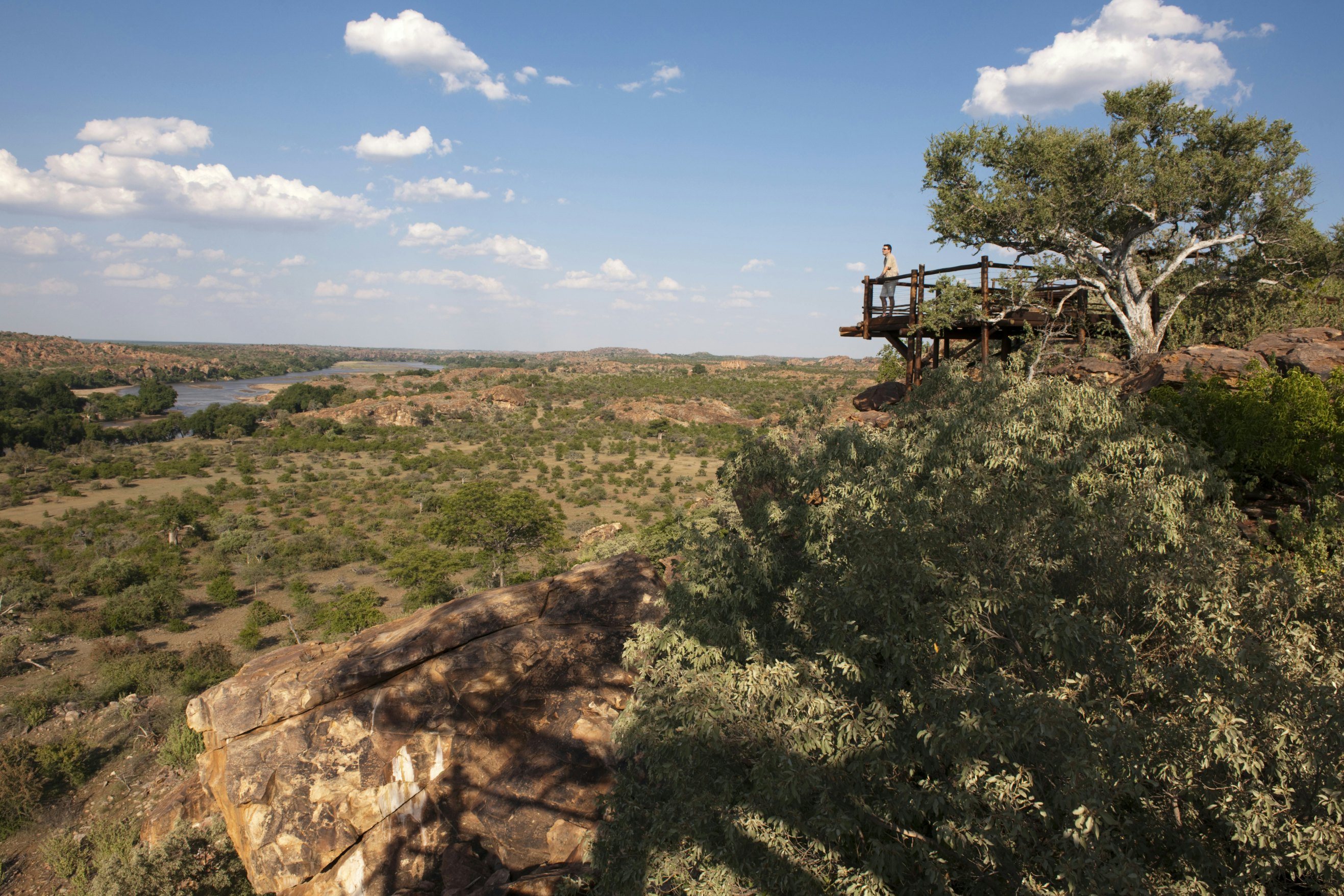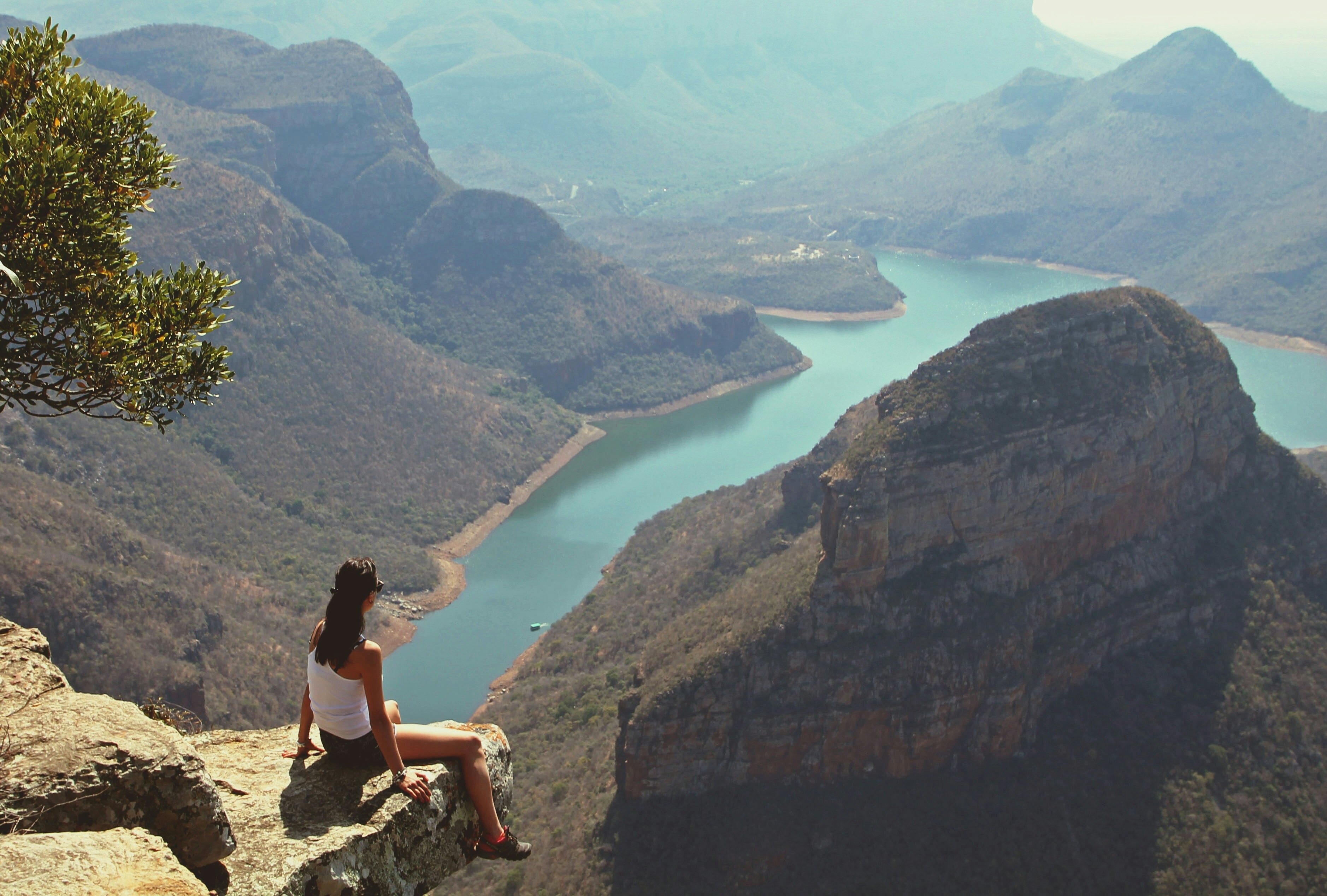
The 11 most incredible national parks in South Africa for wildlife, hiking and more

Jan 5, 2022 • 8 min read

You can spot some of Africa's most iconic animals in South Africa's impressive national parks © WitR / Shutterstock
From snow-capped mountains and the Bushveld to sub-tropical beaches and the Kalahari, South Africa is a mind-bogglingly diverse country. Showcasing an astonishing array of landscapes, the country's national parks and game reserves are great places to experience true wilderness and get close to Africa's famous wildlife.
If you include private reserves, South Africa has hundreds of national parks and game areas. In some reserves, the focus is on wildlife encounters, while others are primarily wilderness sanctuaries or hiking areas. Here are the best national parks to add some natural wonder to your South Africa itinerary.
Kruger National Park
Best national park for wildlife watching
Kruger National Park is one of the world's greatest wildlife-watching destinations. Some of Africa's most iconic species – elephant, lion, leopard, cheetah, rhino, buffalo, giraffe, hippo and zebra – share the bushveld with a supporting cast of 136 other mammals and more than 500 bird species. Beautiful granite kopjes (hills) pepper the south, while the Lebombo Mountains rise from the savanna in the east, and tropical forests cover northern parts of this 7520 sq mile park.
Yes, we concede that Kruger can sometimes become crowded with safari groups. And yes, you may have to wait in line to see those lions around a kill. On the flip side, Kruger's vast network of roads makes this one of Africa's most accessible parks, and it's well suited for families. You can explore with your own vehicle or join a huge range of guided wildlife safaris, and accommodation is plentiful and great value.

Royal Natal National Park
Best national park for mountains
Fanning out from some of the loftiest summits in the Drakensberg mountains, 30 sq mile Royal Natal National Park has a presence that far outstrips its modest size. With some of the Drakensberg’s most dramatic and accessible scenery, the park is crowned by the sublime Amphitheater, a 5km (3 mile) wall of cliffs and canyons that’s spectacular from below and even more dramatic when viewed from above.
Here, the Tugela Falls drop 945m (3100ft) in five stages; the highest level often freezes in winter. Looming behind is Mont-aux-Sources at 3282m (10,768ft), the source – hence the name – of the Tugela, Elands and Western Khubedu Rivers. This last river eventually becomes the Senqu (Orange) River and flows all the way to the Atlantic. The park is renowned for its excellent day walks and more ambitious multiday hiking opportunities.

Golden Gate Highlands National Park
Best national park for sunsets
Just before the darkness erases the remaining flecks of color from the sky, something magical happens in Golden Gate Highlands National Park. The jagged sandstone outcrops fronting the foothills of the wild, maroon-hued Maluti Mountains glow golden in the dying light. The lemon-yellow rays may silhouette a lone kudu standing still in a sea of mint-green grasses before the sky explodes in a fiery collision of purple and red. Golden Gate Highlands National Park might not boast any of the Big Five, but it does feature some fantastic sunsets.
There are plenty of animals in the park, however, including grey rheboks, blesboks, elands, oribi antelope, Burchell’s zebras, jackals, baboons and numerous bird species, including the rare bearded and Cape vultures and the critically endangered bald ibis. The park is popular with hikers on long treks, but there are also shorter walking trails.

Table Mountain National Park
Best national park for activities
Stretching from Signal Hill to Cape Point, Table Mountain National Park is a natural wonder, and the most recognizable natural feature in South Africa. The surrounding national park covers granite and sandstone mountains, giant-boulder-strewn beaches and shady forests. For the vast majority of visitors, the main attraction is the 1085m-high, table-flat plateau, the top of which can easily be accessed by cableway from the outskirts of Cape Town. The park is the setting for an impressive range of adventure activities including hiking, abseiling, mountain biking, rock climbing, paragliding, bird and wildlife watching, snorkeling and diving.

Kgalagadi Transfrontier Park
Best national park for desert landscapes
A long, scorched highway leads between crimson dunes from Upington to Kgalagadi Transfrontier Park, one of the world’s last great, unspoiled ecosystems. As soon as you enter this magical park, tucked away alongside Namibia in the Northern Cape and spilling into southwest Botswana, you’ll see why the journey was well worth the effort.
The Kgalagadi is a wild land of harsh extremes and frequent droughts, where shifting red and white sands meet clusters of spiky thorn trees and bone-dry riverbeds. Yet despite the desolate landscape, the park teems with wildlife. From prides of black-maned lions to packs of howling spotted hyenas, there are some 1,775 predators here. It’s one of the best places in the world to spot big cats, especially cheetahs. Add in giant, orange-ball sunsets and black-velvet night skies studded with twinkling stars, and you’ll feel like you’ve entered the Africa of storybooks.

Cederberg Wilderness Area
Best national park for hiking
Some of the Western Cape's finest scenery can be found in the desolate Cederberg Wilderness Area. Here, craggy peaks climb to around 2000m (6560ft), harboring weird rock formations, well-preserved rock art produced by the San people, and clear mountain streams. It's excellent terrain for hiking and rock climbing.
Cederberg isn't known for its wildlife, though you might glimpse a baboon, a bat-eared fox or one of the small antelopes that hop amongst the rocks. Elusive leopards roam the crags at night, but you'd be extremely lucky to see one.
The region is better known for its plant life – mountain fynbos (shrubby vegetation with fine leaves) abounds, and wildflowers erupt in spring. Vegetation varies with altitude, with the eponymous cedar stands growing between 1000m (3280ft) and 1500m (4920ft). This is also the only place in the world where rooibos (red bush) grows and is processed into tea.

Mapungubwe National Park
Best national park for history
Stunningly stark, rocky landscapes reverberate with cultural intrigue and throng with wandering wildlife at Mapungubwe National Park. A Unesco World Heritage site, Mapungubwe contains South Africa’s most significant Iron Age site, plus animals ranging from black and white rhinos to meerkats and the rare Pel’s fishing owl.
The wildlife-watching is excellent, as is the birdwatching, and lions, leopards and elephants are commonly spotted. But the park is as much about history as wildlife – archeological finds uncovered in the 1930s are displayed at the excellent Interpretation Center, and the site itself can be visited on a tour.

Blyde River Canyon Nature Reserve
Best national park for rock formations
The stunning Blyde River Canyon Nature Reserve is centered on the 26km (16 mile) Blyde River Canyon, where epic rock formations tower above forested slopes, and birds' eye views abound at the dramatic meeting of the Drakensberg Escarpment and the Lowveld. It's one of the world's largest canyons and one of South Africa’s most impressive natural sights.
Most visitors drive along the canyon’s edge, where the Panorama Route (mostly Route 532) offers plenty of viewpoints where you can stop and gaze in awe, including the Three Rondavels, Bourke’s Luck Potholes and God’s Window. If you have enough time, however, the canyon is even better explored on foot, with numerous walking trails.

iSimangaliso Wetland Park
Best national park for coastline
The iSimangaliso Wetland Park, another Unesco World Heritage site, incorporates a broad range of landscapes from the Mozambique border to Maphelane, at the southern end of Lake St Lucia. With the Indian Ocean on one side and a string of lakes on the other, this park protects five distinct ecosystems, covering everything from offshore reefs and beaches to lakes, wetlands, woodlands and coastal forests.
Loggerhead and leatherback turtles nest along the park’s shores, and whales and dolphins appear regularly offshore. On land, the park is occupied by numerous mammals, including antelopes and zebras, but the showstoppers are the reserve's 800 hippos and 1200 Nile crocodiles. During the holiday season, big crowds gather on the ocean beaches for everything from diving to fishing.

Addo Elephant National Park
Best national park for elephant watching
The jewel in Eastern Cape's crown is Addo Elephant National Park, South Africa's third-largest national park. It protects what remains of the once-huge elephant herds that used to roam the Eastern Cape. When Addo was proclaimed a national park in 1931, there were only 11 elephants left; today there are more than 600 in the park, and you’d be very unlucky not to see some.
A day or two at Addo is a highlight of any visit to this part of the Eastern Cape, not only for the elephants but also for chances to spot lions, zebras, black rhinos, Cape buffaloes, spotted hyenas and myriad birds. This is also one of the few parks in Africa to boast the "Big Seven," thanks to sightings of great white sharks and southern right whales (in season) off the coastal section of the park.

Namaqua National Park
Best national park for wildflowers
Flower-seekers flock to the small, remote Namaqua National Park each spring, when the shrubland and old wheat fields are transformed into vivid color by the annual wildflower bloom. There are short nature trails and drives with viewpoints, and plenty of spots where you can stop to photograph the flowers. For the rest of the year, the national park is largely forgotten, although that does make it a peaceful place for a hike. It's also a good destination for birdwatching, home to many small, colorful bird species.
You might also like:
Do you need a visa to go to South Africa?
The top 8 hikes in South Africa for stunning views
19 best places to visit in South Africa














